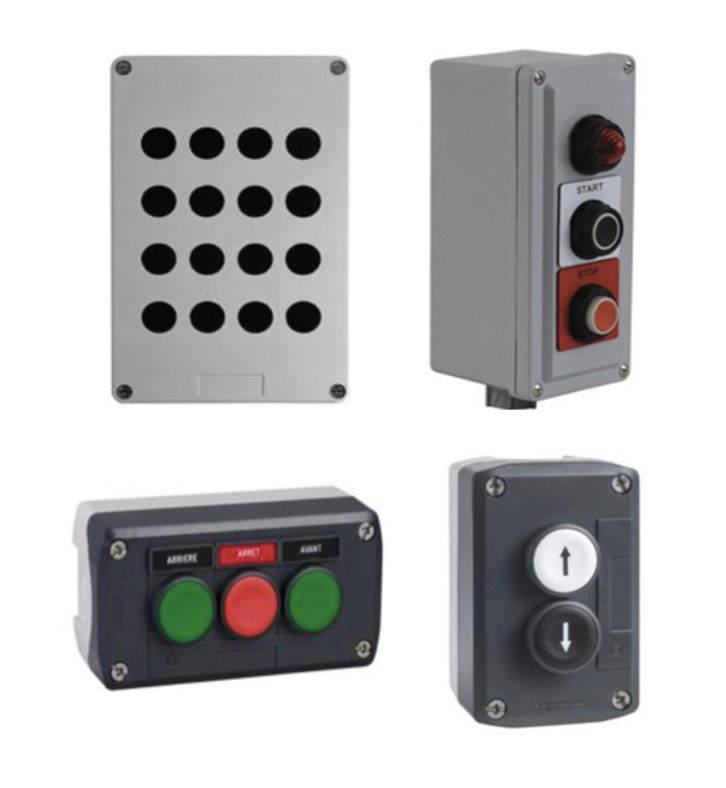Control Stations

RSP Supply carries a full line of control stations designed for dependable and efficient operation of industrial equipment. These stations serve as centralized points of command, giving operators the ability to start, stop, and monitor machinery or processes with precision and safety. Control stations are critical components in industrial automation and process control. They consolidate multiple operator functions into one accessible interface, often combining pushbuttons, toggle switches, selector switches, and pilot lights. This integration allows operators to maintain clear visibility and control over connected systems, ensuring smooth and safe operation.
Modular control stations are available to suit a wide range of configurations, from simple start/stop units to complex multi-function panels supporting hundreds of commands. Advanced models can communicate directly with automation networks, serving as the central hub for machine or process management. Built from rugged materials such as aluminum, stainless steel, or polycarbonate, these control stations are made to withstand vibration, moisture, and harsh industrial conditions.
FAQs
Q: What are control stations used for?
Control stations are used to operate and monitor industrial machinery and processes, providing a central interface with buttons, switches, and indicator lights for efficient equipment control.
Q: What materials are control stations typically made from?
They are often constructed from durable materials such as aluminum, stainless steel, or polycarbonate to withstand industrial conditions, moisture, and impact.
Q: Can control stations be customized?
Yes, modular designs allow users to customize control stations with different pushbuttons, pilot lights, and selector switches to meet specific operational requirements.
Q: Do control stations support network communication?
Many advanced models can integrate with automation networks or PLC systems, enabling remote operation, monitoring, and diagnostics.
Q: Are replacement parts and accessories available?
Yes, RSP Supply offers accessories such as covers, labels, and mounting options to enhance durability and simplify installation and maintenance.
Why Buy Control Stations from RSP Supply
RSP Supply provides high-quality control stations from trusted manufacturers, offering fast shipping, competitive pricing, and knowledgeable support. Whether you need a basic start/stop station or a complex multi-function unit, our selection ensures reliable performance and long-lasting operation in any industrial environment.

